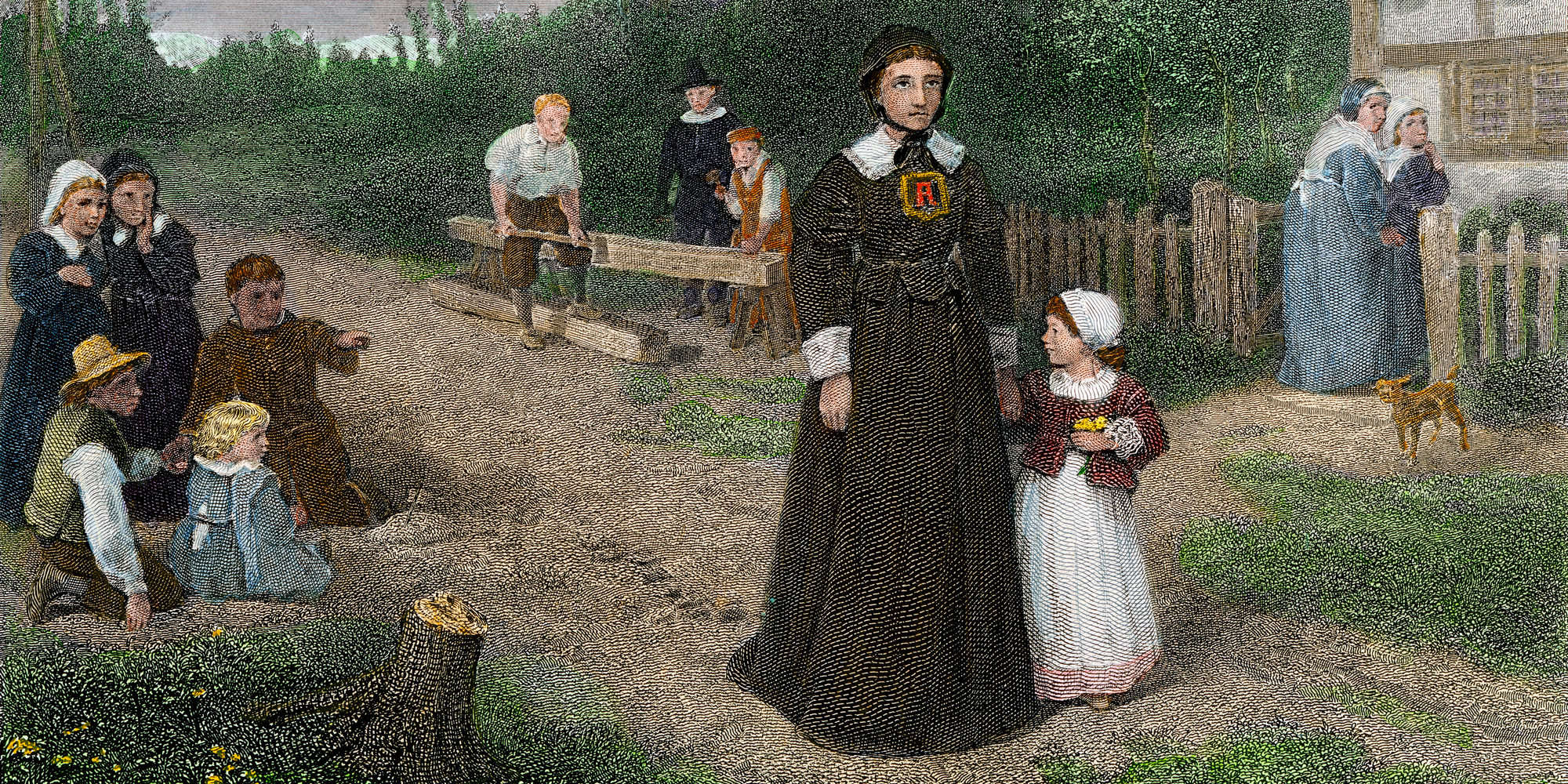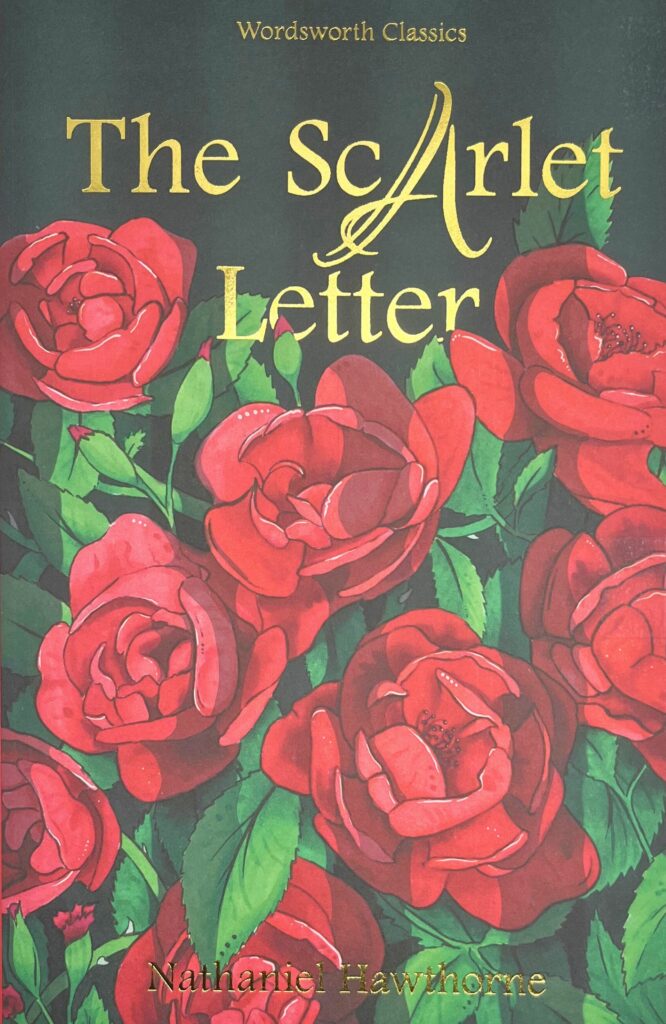
David Stuart Davies looks at The Scarlet Letter
David Stuart Davies looks at Nathaniel Hawthorne’s classic American novel, a tale of sin, guilt and redemption set in Massachusetts in the mid-seventeenth Century. The Scarlet Letter….
‘The scarlet letter was her passport into regions where other women dared not tread. Despair, Solitude! These had been her teachers – stern and wild ones – and they made her strong, but taught her much amiss.’ Nathaniel Hawthorne
The Scarlet Letter is a classic of American literature. Although it was published in 1850, the major theme of shaming and social stigmatizing is just as relevant today. The setting is the superstitious Puritan community of Boston in the seventeenth century. The main character is Hester Prynne, a young woman who has borne a child out of wedlock. At the time of conception, Hester believed that she was a widow, but her husband, Roger Chillingworth, arrives in New England very much alive and conceals his identity. He finds his wife forced to wear the scarlet letter A on her dress as punishment for her adultery. After Hester refuses to name her lover, Chillingworth becomes obsessed with uncovering his identity. When he learns that the man in question is Arthur Dimmesdale, a saintly young minister who is the leader of those exhorting her to name the child’s father, Chillingworth proceeds to torture the minister with the knowledge of his sinful secret. Stricken by guilt, Dimmesdale becomes increasingly ill.
The Scarlet Letter is framed in an introduction called ‘The Custom House’ in which the writer, a stand-in for Hawthorne, purports to have found documents and papers that substantiate the evidence concerning Prynne and her situation. The narrator also claims that when he touched the letter it gave off a ‘burning heat… as if the letter were not of red cloth, but red hot iron.’
The story begins at the close of Hester’s imprisonment many months after her affair and proceeds through the years to the final acceptance of her place in the community as the wearer of the scarlet letter. It was a bold move by Hawthorne to present the central character as a strong woman who to the outside world was morally tainted. He gives the reader a remarkably courageous self-reliant heroine who is never truly repentant for committing adultery with the minister for she feels that their act was consecrated by their deep love for each other.
With the scarlet letter of shame she is forced to wear upon her breast, and with Pearl, the child that was a direct result of her crime, she becomes the town’s outcast. These elaborate conflicts carry on throughout the plot as Hester struggles to prevail over her disgrace and to keep the identity of her lover a secret. The third person narrative focuses on the development of Hester as she gains independence, and strives to achieve forgiveness and normality back in her life. Although she is initially scorned, over time her compassion, innate goodness and dignity silence many of her critics.
While not condoning the adultery, the novel presents Hester and her child, Pearl, as purified through the ordeal of public condemnation, while the Puritan townspeople and clergy are revealed as hypocrites and Hester’s moral inferiors.
The Scarlet Letter creates intriguing symmetries between social oppression and psychological repression. Dimmesdale’s sense of torment at his guilty secret and the physical and mental manifestations of his malaise reflect the pathology of a society that needs to scapegoat, punish harshly and alienate its so-called sinners. Time has not altered society’s reactions to situations they regard as offensive. Eventually, in the novel, personal integrity is able to break free from social control. Perhaps more than any other novel, The Scarlet Letter effectively encapsulates the emergence of individualism and self-reliance from America’s Puritan and conformist roots.
A great deal of the fiction produced by the author, Nathaniel Hawthorne, (1804 – 1864) explores themes of guilt, retribution, and atonement. He was the direct descendant of John Hathorne, a presiding judge at the Salem witch trials in 1692, Hawthorne struggled to come to terms with Puritanism within his own sensibility and as the nation expanded geographically and intellectually.
The Scarlet Letter received a mixed reaction on publication. Most literary critics praised the book but religious leaders took issue with the novel’s subject matter. One ecclesiastical review concluded that the author ‘perpetrates bad morals’. However, in time the novel received great acclaim. D. H. Lawrence said that there could not be a more perfect work of the American imagination and Henry James said of the novel, ‘It is beautiful, admirable, extraordinary; it has in the highest degree that merit which I have spoken of as the mark of Hawthorne’s best things—an indefinable purity and lightness of conception… One can often return to it; it supports familiarity and has the inexhaustible charm and mystery of great works of art.’
The Scarlet Letter has inspired numerous film, television, and stage adaptations. There was a film version as early as 1908. The first talkie appeared in 1934 featuring the great silent movie star Colleen More in one of her rare speaking roles as Hester. There was a rather strange film version of the novel in 1973. The exteriors which were supposed to resemble Salem, Massachusetts, were shot in Spain and the cast was from all over Europe. Six or seven different languages were being spoken by the actors and some had to be dubbed in English in post-production while the extras representing the inhabitants of Salem were all Spaniards.
Demi Moore starred in the 1995 Hollywood film version directed by Roland Joffe, but the screenplay deviates significantly from the original novel. There were no star names in the 2015 movie directed by Elizabeth Berry, but it was remarkably faithful to the novel and created a wonderful sense of the period and the claustrophobic nature of the Puritan code.
The dilemma and conflict that Hawthorne explores in this classic text still fascinates. As long as society debates the parameters of morality, The Scarlet Letter will continue to engage emotions and raise issues.
Image: Hester Prynne and her daughter Pearl from Hawthorne’s The Scarlet Letter. Hand-coloured halftone of an illustration Credit: North Wind Picture Archives / Alamy Stock Photo
Books associated with this article
